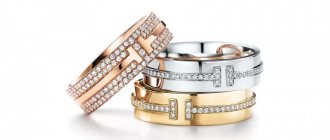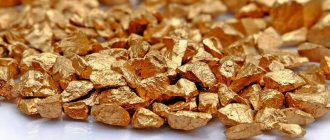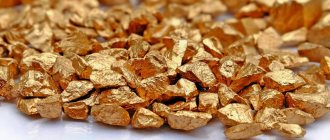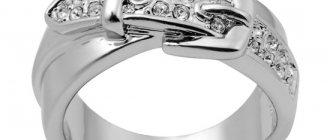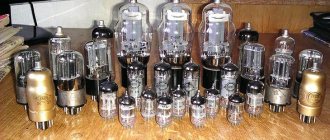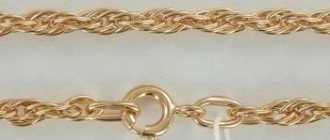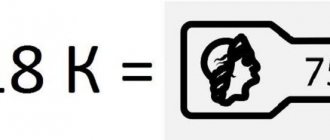What kind of gold is this
Everyone has heard the term “red” gold, which is sometimes called red, which is not entirely true. Chervony is an almost pure metal above 900 purity. When heated, it acquires a bright scarlet color.
Thanks to this feature, the presence of a foreign element in the chervonets was checked precisely by heating. When coins made using ligatures heat up, they form opacities.
The red precious metal, on the contrary, is distinguished by the presence of a ligature in its composition. In this case, numerous variations of additives are allowed. And the quantitative ratio of the noble element and the ligature is directly related to color, quality and purity.
Composition and properties
Modern manufacturers prefer various alloys to red gold. This is due to the fact that the ligature increases wear resistance and gives unusual tones to the noble metal.
Today there are several options used in the production of jewelry. Their composition and physical properties are regulated by a system of established Russian GOSTs.
What is responsible for color?
Expert opinion
Vsevolod Kozlovsky
6 years in jewelry making. Knows everything about samples and can identify a fake in 12 seconds
The shade of the resulting material directly depends on the selected ligature and its quantitative share in the total mass. However, this precious metal also has some peculiarities. For example, red 900 standard has a slight reddish tint and has almost no impurities.
Strength
To protect products from mechanical damage and make them more durable, alloys began to be introduced into the composition of pure Au. This method increases the service life and makes jewelry more affordable.
Today, limited editions of jewelry are made from pure gold. Basically, these are massive wedding rings that retain their shape more easily.
Shade range
By adding rubidium to the 999 sample, a black metal is obtained. Blue indicates that indium was used. The hardest color to achieve is white. For its production, not only Aurum is used, but also nickel, platinum and palladium.

The palette of red tones looks no less impressive. These shades are achieved by introducing copper ore into the composition. The brighter the metal, the lower its purity and the higher the copper content.
Noble and delicate pink shades are obtained by introducing copper and silver. At the same time, the saturation of pink is regulated by the content of silver.
Samples
Red gold is available on the Russian market in four varieties:
- 333rd or 375th. This metal contains no more than 38% pure Au. It is practically not used in jewelry, as it quickly fades. There are alloys of orange color.
- 583rd (Soviet). Depending on the composition, it can change color from bright red to pale pink. Copper and silver were used as alloys. Pink versions contain nickel.
- 585th. The most common test. Copper, silver, palladium and nickel are used as alloys. A very durable and yet malleable alloy.
- 750th. Valued for its strength and malleability in forging. It contains platinum, nickel, copper, silver and palladium. May be red or pink.
There are six types of samples in total. All of them determine the quantitative fraction of the main element contained in the alloy. For example, the product has a hallmark of 585, which means: a 1 kg bar contains 585 g of pure gold, and the rest is alloys.
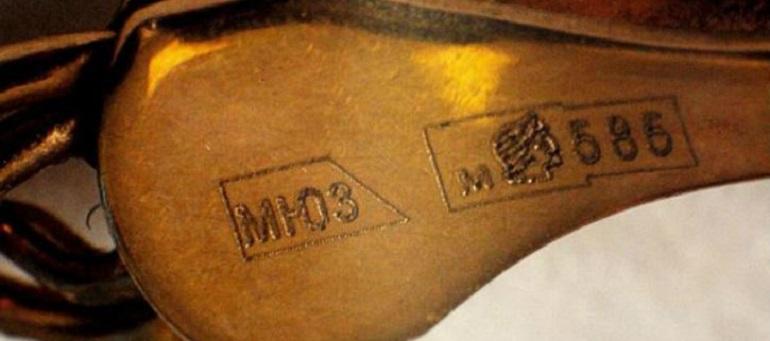
Samples of red gold
To determine the amount of gold in a product, a sampling system is used. The most common systems for determining the gold content in alloys are carat and metric.
Red gold alloys are present in the 333rd, 583rd, 585th, 750th gold samples.
Gold test (from the English probe, assay) - determination of the ligature in gold, as well as special marks (stamps) that are imposed by control institutions to guarantee the content of precious metals in products.
Our compatriots may encounter the karat system when purchasing jewelry in American countries, as well as some European and Arab countries. To make it easier for readers to understand the intricacies of samples, standards, and ligature materials, tables No. 1, 2, 3 are given below.
Table No. 1: Sample systems (determining the amount of gold in the alloy)
| Systems for determining the amount of gold in alloys | Description |
| Carat | One carat is equal to one twenty-fourth of the mass of the alloy, according to the British carat system (it is common in the USA, Switzerland and other countries). 24 carat gold (24K) is pure, free of any impurities, while 14 carat gold (14K) contains 14 parts gold and 10 parts other metals. Jewelers use samples of 9, 10, 14, 18 and 24 carats for their products. |
| Metric | The transition to the metric system of samples in Soviet Russia occurred in 1927. The share of precious metal according to this system is determined by the number of grams in one kilogram of jewelry alloy. For example, 1000 g of 750-grade alloy contains 750 grams of noble metal and 250 g of other impurities or alloy. For the manufacture of gold products, 375th, 500th, 585th, 750th, 900th, 916th, 958th samples are used. |
We recommend reading: How is gold useful for humans?
Table No. 2: Correlation between sample systems, differences between them
| Metric system | 999 | 958 | 750 | 585 | 583 | 500 | 375 |
| Carat sample system | 24 | 23 | 18 | 14 | 14 | 12 | 9 |
| Share of pure gold | 99,9% | 95,8% | 75% | 58,5% | 58,3% | 50% | 37,5% |
Table No. 3: Description of samples and ligature parts
| Metric gold content | Description |
| 333rd and 375th samples | The alloy contains only 33 or 38% gold (the bulk is made up of silver and copper), colors vary from yellow to red, the alloy fades in air because iron sulfide forms on the surface |
| 500 sample | Contains 50.5% gold (the rest of the alloy is silver and copper), low-cast |
| 585 sample | An alloy containing 59% gold (ligature metals - silver, copper, palladium, nickel), is hard, durable, does not tarnish in air, is easily forged, therefore is widely used by jewelers in industry |
| 750 sample | This alloy contains 75.5% gold (the main components are silver, platinum, copper, palladium, nickel); the color palette is also very diverse. Due to its hardness, strength, and ease of processing, it is widely used for making jewelry. |
| 958 sample | The alloy contains 96.3% pure gold. It is practically not used for the production of jewelry, it is easily deformed, and has a dull yellow color. The cost of 958 gold is higher compared to other gold grades |
| 999 sample | Essentially pure gold, rig. In Ancient Rus', such gold was called red gold. Soft metal, prone to deformation. It is not used in its pure form in jewelry. |
How is it different from yellow gold?
The first and main difference is color. And, of course, the composition. In yellow alloys, copper is never found, while in red alloys it is the main alloying element.
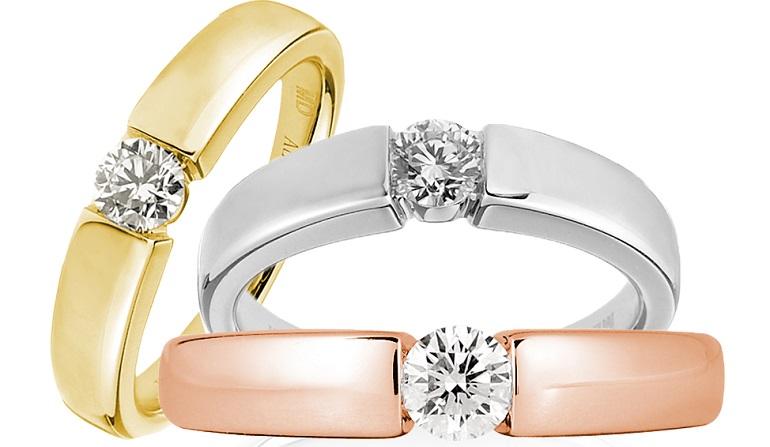
Jewelry made from red gold is gaining popularity among Russians, but Europeans prefer classic yellow jewelry. In Moscow you can buy exquisite jewelry from any metal, but it is better to do this in branded stores.
Which gold is better to choose, red or yellow?
The choice of shade depends entirely on personal preference. Today you can find jewelry in three colors at once. The main thing when choosing jewelry is to buy complete sets. Yellow alloys also vary in color, and the earrings you purchase may not match your previously purchased chain or ring.
High-quality and expensive metal has a light, unobtrusive tint. This is especially true for copper alloys. Here it is better to avoid saturated colors.
Red color gold
The main factor as to why gold is red is the presence of other elements in the material, used as impurities to the main element.
Copper gives the precious metal its scarlet hue; the higher the proportion of “Cuprum” in the composition of the material, the more saturated the hue red gold will have. It can range from light pink to bright scarlet, depending on the content of copper and other elements in its composition. These factors directly determine why gold is red.
The proportion of silver is one of the fundamental factors in relation to the quality of the final material; if the proportion of copper is too large, over time, the metal will be highly susceptible to the oxidation process and will begin to lose its original color.
The presence of a light pink tone will indicate the fact that in the manufacture of the metal, six times more copper was used in relation to silver. An excessively high proportion of “Kuprum” in the composition will indicate the low quality of the metal. To give the metal a brown tint, in addition to “Cuprum” and silver, a share of palladium is added as an impurity.
Which gold is more expensive - red, white or yellow?
The cost depends on many factors. In particular, from the components of the ligature. Alloys containing platinum and palladium will be more expensive.
Expert opinion
Vsevolod Kozlovsky
6 years in jewelry making. Knows everything about samples and can identify a fake in 12 seconds
As a rule, the cost of white metal is always higher. The next line in the price rating is occupied by yellow metal, and copper finishes the top three. However, soft pink alloys, which also contain platinum and palladium, may be valued higher than classic yellow ones.
Combination with stones
Unlike yellow gold, red gold is inlaid much more often. It has rich scatterings of stones, numerous inserts and ornate patterns. Pink alloys look good with diamonds of any size.
And for everyday wear, 585 standard, inlaid with cubic zirconia or other semi-precious stones, is suitable.
History of the alloy
Red gold jewelry appeared during the first alchemical experiments. Then scientists decided that such an alloy was unsuitable for use in science and did not use it in their work. But in Rus', over time, they began to mint coins from this alloy. The first money that appeared in this way was called chervonets. Therefore, to the question, “what is red gold?”, we can answer that it is an analogue of the red alloy of the precious metal.
True, in the course of history, confusion arose, since red gold has a much lower precious metal content in the alloy than the one from which the chervonets were made. But the point is that copper was mixed into coins to preserve the treasury, and if at first it actually contained 99% of the noble metal, then over time this figure decreased. Red gold is also called Russian. This is due to the fact that there was a lot of copper on the territory of the state, and it was sold cheaply, which made it possible to reduce the cost of the product.
As for the fashion for such jewelry, it is also changeable. In the seventies and eighties, having such a product was considered an indicator of well-being, and it was also a stylish accessory. With the onset of the nineties, red gold began to be considered Soviet and old-fashioned, as products from abroad slowly began to appear. And also the concentration of copper and gold in the product gradually changed, which affected the appearance. Of course, people wanted something new, so when they saw white or regular yellow gold, red began to seem more stylish to them.
Now the fashion for alloys of gold and copper has returned. Since the majority depends on the design of the product, and not on its sample and ligature. But if we judge only the alloy, then it is believed that red gold emphasizes status and is therefore suitable for women or older men. For older people, the products will also help visually rejuvenate their skin.
Where can you buy or sell
People who sell jewelry secondhand often find counterfeit goods, and purchase prices are significantly reduced. If you want to save money, you can find good options at a pawn shop. But it's best to go to the store.
In addition, in pawn shops you can sell your boring jewelry at a profit. The final purchase price will be influenced by the condition (scrap or jewelry), the presence of precious or semi-precious stones, and fineness.
How much is 1 gram of red gold worth today?
Rates are updated according to global fluctuations in the cost of a gram of gold. Prices are calculated based on the precious metal content of the alloy. The graph below shows the cost of the most popular 585 standard:
| Price 999 standard according to the Central Bank | Market value of the sample today | Scrap price | Price in jewelry |
Which gold is better - red or pink?
There is no, and cannot be, a clear answer to this question. Because if both products are made of 585-grade metal, then how can their value be compared? It's still the same gold. The price depends on the fineness of the work, the weight of the jewelry, the gemstones used, the brand and many other factors. As a last resort, you can compare 750 and 585 gold (the first, of course, is more expensive), but not 585 and 585.
As for personal factors, most men prefer red or pale pink; women choose any shade, but more often pink or rose. Even a rather massive Solomon ring on your hand looks elegant if you choose the right shade.
Much depends on what stones are used; any shade of red gold looks very good with diamonds. Semi-precious stones with desaturated colors - green, blue, violet - go well with light shades.
In general, everyone chooses according to their taste. When making jewelry, we use both red and rose gold, varying the proportions of copper, silver and gold. For all products we provide international certificates and samples confirming the use of high-quality precious metals. So you can wear exactly what you like.
Recommendations for care, cleaning and storage
The following tips will help you maintain the shine and beautiful appearance of your jewelry:
- A soap solution will help keep items made from red alloys from tarnishing longer. Apply it to jewelry carefully, using soft brushes.
- Inlaid jewelry is wiped with a soft cloth, without using brushes.
- You can clean your jewelry using a sugar solution. To do this, you need to take 200 ml of warm water, dissolve 3 tablespoons of sugar in it and lower the decoration into the liquid, leaving it for 12 hours.

Jewelers do not recommend using the favorite method of using toothpaste and a brush. This will greatly spoil the appearance of the decoration. You also need to limit the contact of jewelry with chemicals.
To prevent the rings from becoming deformed, it is advisable to remove them when going to the gym or doing physical labor.
